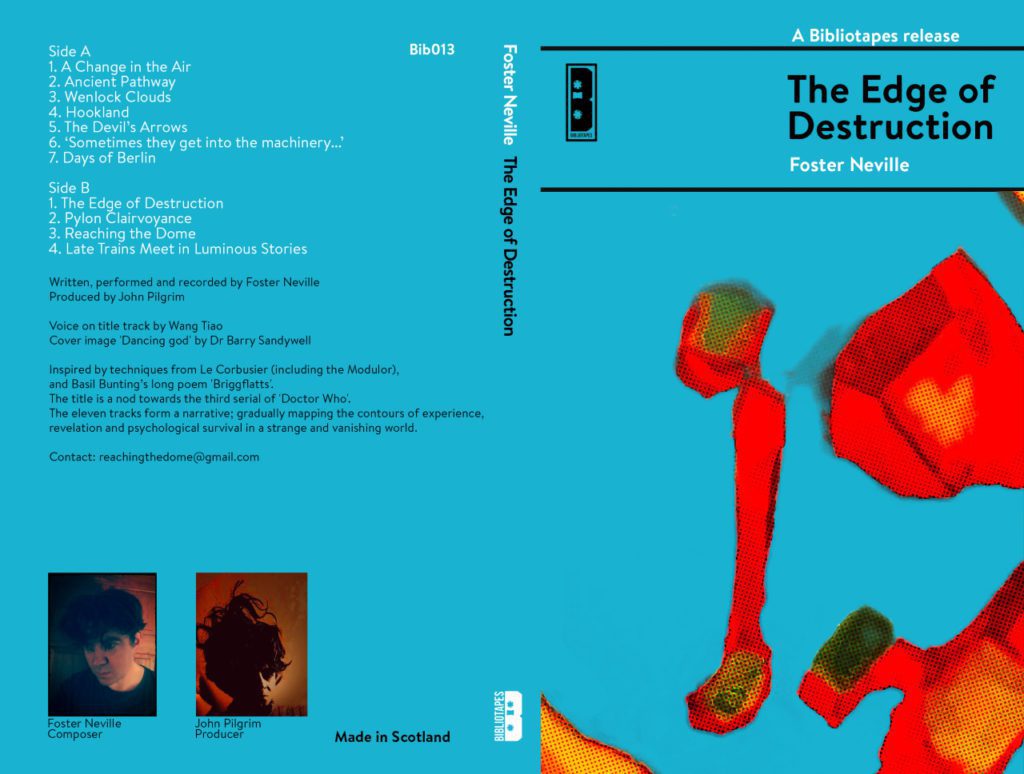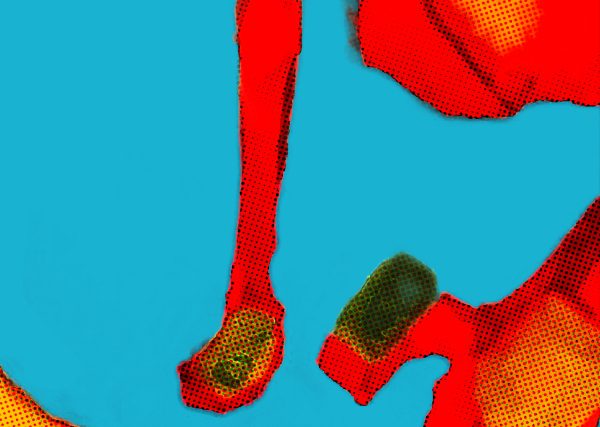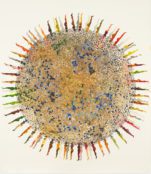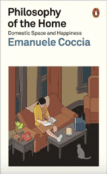A disembodied voice counts down slowly but emphatically, the countdown is final and cannot be halted, yet you are at peace, what comes next (or what will have come next) no longer concerns you. How did you reach this state and how long have you been in it? The answers are highly improbable, yet make perfect sense when examined.
Scottish label Bibliotapes has been releasing haunted and haunting soundtracks for books since 2019. Durham-based artist Foster Neville (who studied poetry under Seamus Heaney) continues this tradition in 2022 with The Edge of Destruction, an imaginative soundtrack for a 1988 novelisation of the eponymous 1964 Doctor Who serial.
If you were commissioned to construct an imaginary soundtrack for a specific book, where would you begin? Probably from the core text. However, this album’s refined, vaporous soundscapes, have been alchemically distilled down from a wide range of sources including – among others – 19th century German poetry, the theories of Prince Matila Costiesco Ghyka, Northern poet Basil Bunting’s long poem ‘Briggflatts’ and the architecture of Le Corbusier. Any of these rich sources could be rich enough to inspire whole albums, but here they’re all absorbed into a subtle, shifting form. Composer and producer wisely avoid the vulgarity of explicit references, letting their sources and influences merge into the new whole.
Just as many now choose to dwell musically in the 1980s by listening purely to the work from the period or the numerous sonic replicants of it, other listeners tarry in a less clear-cut, partly-fictional era. The relentless rise of another retro trend, marketed and widely known as “hauntology”, has infused the last decade with a partly-imaginary vision derived from the uncanniest aspects of the 1960s and especially the 1970s in Britain. To adapt a term from music writer Simon Reynolds, the work of this label and artist fit loosely into what we could call a “hauntological continuum”. The irony is that for some of us who remember the era, the vast majority of such work actually normalises and domesticates the sheer oddness of the era, producing a bland washed-out, simulacra of it that is rarely genuinely disturbing. All too often, hauntology isn’t that haunting, but a debased form I term “landfill hauntology.”.
The haunting is not what it seems …
There are exceptions though, and they don’t necessarily have to be overtly dark or sonically abrasive to effectively summon some of the ghosts and demons of that strangest of times and its collisions between folk and technological impulses. This is the quietly haunting interzone in which Foster Neville operates.
Like all Bibliotapes releases, the physical edition is a cassette release with a retro period design that alludes to British book designs of the 1970s, of the type I remember seeing on my parents’ shelves. In this case the design reflects the physical aspect of the album and the way that the current of its dark undertow unfolds and subtly interacts with the listener’s body. This aspect is reinforced by the cover image ‘Dancing god’ by Dr. Barry Sandywell – a reference to Nietzsche’s love of dancing and his famous dictum “I would believe only in a god that knows how to dance’.
Enhancing the fake period authenticity, the release is consciously structured like a 1970s album, with the shorter tracks on Side A and the longer tracks on Side B. So the stage might seem well-set for an undemanding, by-numbers English hauntology release, especially given that it is clearly stated that the intention is “to present a sonically rich journey and one which it is pleasant to immerse yourself in, rather than the more avant-garde sounds the processes drawn from poetry and architecture might imply.”
However, rather like the early scenes of a Doctor Who episode in which it slowly becomes clear that something is stirring behind the un-threatening pastoral scenes, the album opens itself to something deeper and stranger than many of its counterparts. Although it invokes the 1970s ambient work of Brian Eno and his later generative music concepts, it goes further and bases itself on a “total rejection of the loop”. It makes a bold claim to contemporary relevance and even to provide something “suitable for the shifting structures of the dying stages of our second Elizabethan age.”
One source of the album’s subtlety is producer John Pilgrim, known for his work with the Folk Horror Revival website and publisher. This “guiding hand” may have helped guarantee that on the one hand there’s a subtle uncanniness, but on the other that it doesn’t lapse into the pantomime theatrics of some cliched, overly self-conscious contemporary folk horror.

The album ripples in, pleasantly. There’s no hint yet of destruction or anything particularly amiss. The graceful, gradually extended shimmering chords accustom us to the lay of the land, with the title “A Change in the Air” suggesting a gentle, subtle shift that may not (yet) be fully perceptible. Change is a little more apparent on “Ancient Pathway”. The chords are deeper and there are sudden moments where the focus slightly shifts or blurs – a first hint of “something else”.
“Wenlock Clouds” evokes the Shropshire landscape invoked by poets including A.E. Housman and Alan Sillitoe. Here the tones are slightly curdled and blurry and there are hazy traces of Berlin school synth chords, acting as a scene-setter for the deeper and more contemplative “Hookland”, its title seemingly a nod to David Southwell’s vision of a parallel, uncanny England.
Implanted folk memories …
“The Devil’s Arrows” is the moment when “it” arrives or seeps in like a delicate but uncanny mist. It’s not hard to imagine this sound tracking a slow(ed-down) 1970s Doctor Who sequence. There’s no overt threat, but the spacious mix means that in quieter moments it seems that you can almost hear the track respire. Similarly, “Sometimes they get into the machinery” is rippling rather than obviously sinister, though perhaps “they” can be sensed in the darker chords lower in the mix.
As well as the English landscape references, there’s a more subtle European vein running through the album, present most overtly in the title of “Days of Berlin” and the subtle grandeur of its tones, which almost inevitably brings to mind the “Berlin phase” of Eno’s work with Bowie. On a personal note, this European vein is quite striking for me listening to and analysing the album in my post-Brexit European exile, a slightly uncanny state through which I view England’s current travails. The harmonious arrangement of English and European themes and associations on the album seems especially welcome when so many deny the historic European aspects of Englishness.
It’s typical of the album’s subtlety that “The Edge of Destruction” itself is – at least initially – the most idyllic of these soundscapes. The title is an explicit homage to the 1964 Doctor Who serial of the same name, although as Neville admits, he mis-remembered a countdown sequence that was actually from another, for now unknown Doctor Who story, so that the track is based on what he terms a blurred “folk memory” of Doctor Who. The slightly robotic voice we hear is actually a countdown in Chinese. We’re never told exactly what the countdown is to, but to lull the listener into contentedly witnessing such a countdown is a sign of how skilfully the sounds anaesthetise. The title invites speculation: when is destruction? was it averted? is it being averted? will it be averted? Yet the (an)aesthetic sonic spectacle is so seductive that the answers hardly matter. If worlds must end, let them end as gracefully and painlessly as this. The overall effect here and at other moments on the album is of watching flickering black and white Doctor Who footage across infinite stretches of space and time, with the ideas behind it reduced to mere ghostly traces.
Following this is the longest single track, the intriguingly-titled “Pylon Clairvoyance”. In the hands of Scarfolk and others producing hauntological/folk horror work, pylons have been made definitively other-worldly, and this track subtly builds on this tradition, although again there is sonic light rather than the theatrical darkness that might be expected. At points there seems to be a repeated, bird-like call that’s quite affecting, a slightly mournful whistle that even slightly recalls the 1970s soundscapes of Tomita.
A slow, graceful journey back to reality gets underway with “Reaching the Dome” and concludes with the poetically and mysteriously-titled “Late Trains Meet in Luminous Stories”. Here again there are traces of Eno and an accumulation of unanswered or unanswerable questions. We have returned to normality and we know that it was all a dream – or was it? Despite the references and clues provided, the interpretation of this dream is largely down to the listener and their real or implanted folk memories, which is perhaps exactly as it should be.
Foster Neville – The Edge of Destruction, cassette. Released 24th January 2022 on Bibliotapes.
Main image: Dr. Barry Sandwell, detail from Dancing God, illustration used for The Edge of Destruction, 2022.

From Speak and Spell to Laibach.






















This is a seriously good article on a seriously good album. Headed across to Bibliotapes and was blown away. Clever of Mr Monroe to pick this out from the deluge of releases. There’s clearly no direct Who link, yet the sounds are precisely as Mr Monroe describes them: this is the soundtrack playing to looped and fogged black and white footage of Doctor Who where favourite scenes appear like fond memories. It is itself like some super-enhanced memory of Tristram Carey meets Delia Derbyshire and yet with a Tardis load more of finesse and musicality than they were allowed to lavish.
Any chance of a Trebuchet podcast for this? Would seem ideal material.
For sure, we’re organising it at the moment.
Another podcast request here, would just love to hear more about the process described here.
on it. Stay tuned.
Already in my top albums of 2022. Where can I find more information on the producer, John Pilgrim?
We’re doing a follow up interview with Foster Neville so we might find out more. Otherwise google might be your best bet.